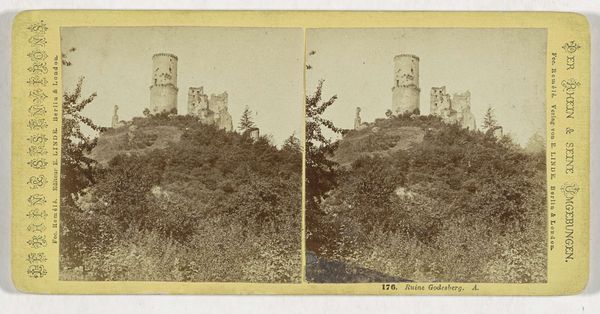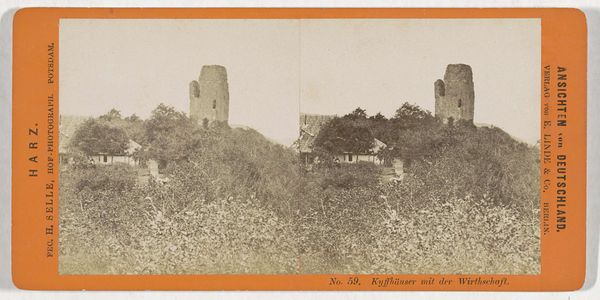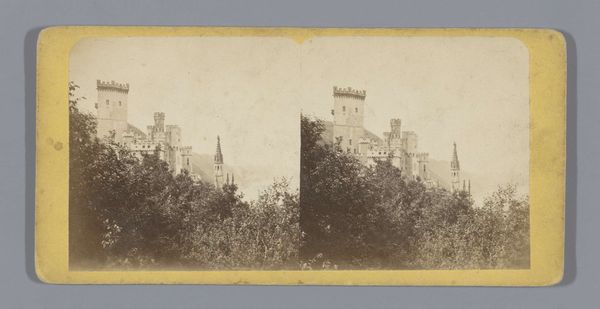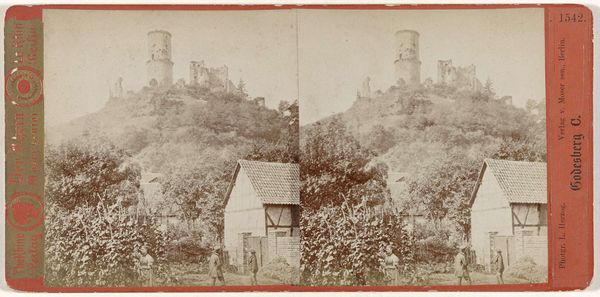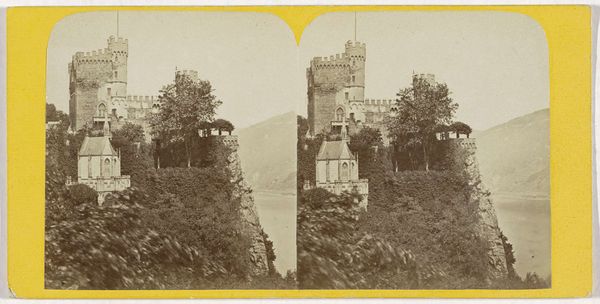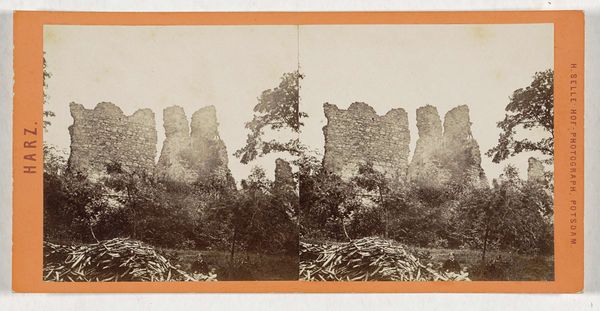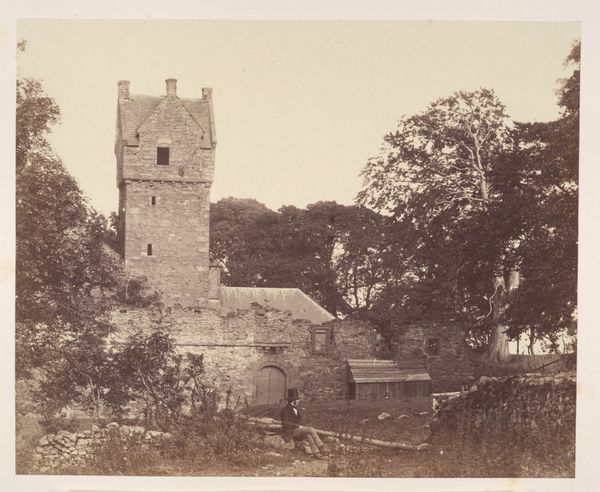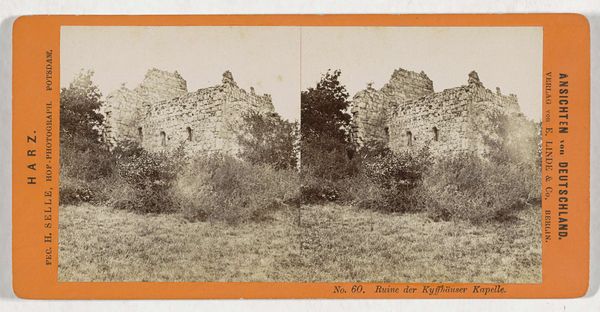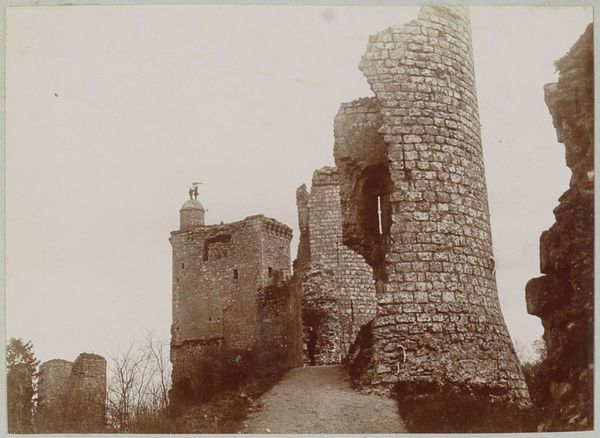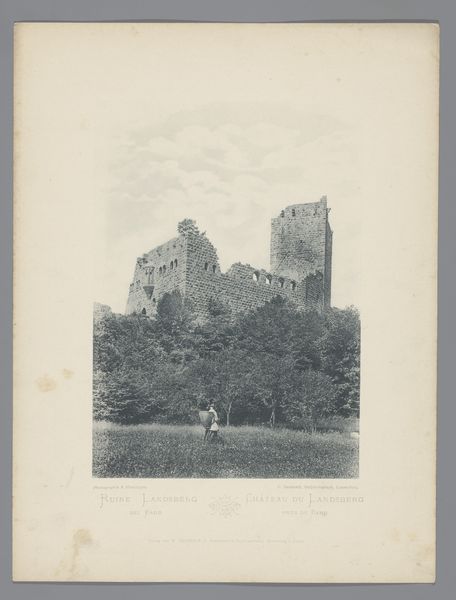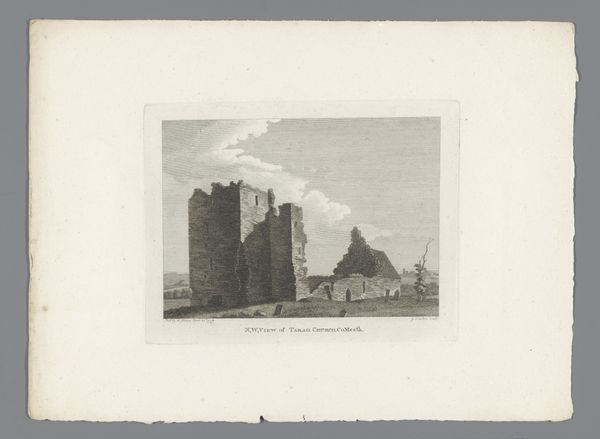
Dimensions: height 85 mm, width 170 mm
Copyright: Rijks Museum: Open Domain
Curator: Before us we have Sophus Williams' photograph "Gezicht op de Barbarossaturm op de Kyffhäuser" from 1876, a gelatin-silver print depicting a tower ruin amidst a forest. Editor: The image gives an overwhelming feeling of romantic nostalgia. The way the ruined tower rises over the landscape—it speaks of lost glories and forgotten empires. There's a melancholic stillness about it. Curator: Indeed. The gelatin-silver process allowed for greater detail than earlier photographic methods. Notice the texture of the stone, the way it contrasts with the foliage. The manufacturing of photographic materials at this time became quite sophisticated. Consider the commercial aspects as well—this was likely part of a series intended for sale, perhaps as a souvenir. Editor: Precisely, ruins were powerful symbols in the Romantic era. This Barbarossa Tower connects with the legend of Emperor Frederick Barbarossa, sleeping until Germany needed him. It evokes ideas of German nationalism, heroism, and destiny. Look at how Williams frames the scene, pushing the tower upward to meet the mist-filled sky—it almost dissolves into legend. Curator: The repetitive element introduced by its nature as stereoscopic image raises certain commercial possibilities too: doubled image, doubled interest and so on. And its seriality places it as part of popular, emerging photographic market. One is naturally tempted to think how production, the consumption process may impact art’s cultural importance and reading. Editor: That's a key point. Even in reproduction, those symbols persist. This image wouldn't resonate so strongly without a shared cultural understanding of what ruins mean, what Barbarossa represents. It is how the very visual representation, including photographic reproduction, serves the reinforcement of the shared memory. Curator: I see how symbols are all over the places as material signifiers in our surroundings too: in industrial complexes, transportation modes etc. Thank you for connecting Romantic longings with mass production materials in an interesting fashion. Editor: And thank you for contextualizing how we're meant to access art. The visual endures beyond manufacture or ruin, and what stays culturally can surprise us.
Comments
No comments
Be the first to comment and join the conversation on the ultimate creative platform.
